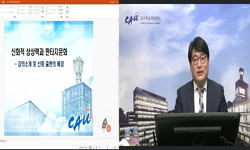The aim of this paper is to analyze choreography, style and structure of ritual dances of Dakachiho Yokagura of Japan for understanding the locus of rituality of ethnic dance. Kagura, a form of religious dance performance prevalent in Japan, is perfor...
http://chineseinput.net/에서 pinyin(병음)방식으로 중국어를 변환할 수 있습니다.
변환된 중국어를 복사하여 사용하시면 됩니다.
- 中文 을 입력하시려면 zhongwen을 입력하시고 space를누르시면됩니다.
- 北京 을 입력하시려면 beijing을 입력하시고 space를 누르시면 됩니다.
https://www.riss.kr/link?id=A106521886
- 저자
- 발행기관
- 학술지명
- 권호사항
-
발행연도
2005
-
작성언어
-
-
주제어
카구라 ; 다카치호 요카구라 ; 슈겐도 ; 제의춤 ; 신화 ; kagura ; Dakachiho yokagura ; shugendo ; ritual dance ; japanese myth
-
KDC
600
-
자료형태
학술저널
-
수록면
121-151(31쪽)
- 제공처
- 소장기관
-
0
상세조회 -
0
다운로드
부가정보
다국어 초록 (Multilingual Abstract)

Kagura, a form of religious dance performance prevalent in Japan, is performed as part of local religious festivals. Kagura is not only the most ancient Japanese ritual but Japan's most ancient performing art form. This kagura tradition represents Japanese folk religious and artistic traditions, attitudes and practices, which have been neglected in Korean scholarship until recently.
In kagura, we can find the rich storehouse of symbols and traditional values through which Japanese culture is perpetuated and maintained. The Kagura dance can not be understood apart from its Japanese cultural and religious tradition, of which it is a product, and which it serves to maintain.
In chapter II, an analysis of the rituality of Dakachiho Yokagura is provided. The relation of Japanese myths, Shugendo ritual and ritual dance with kagura is examined as well. And the basic structure of kagura and the setting of the performance are described: kagura stage, music, tools and masks. In chapter III, I will analyze choreography, style and structure of ritual dances of Dakachiho Yokagura. It seeks to show how Shugendo ritual and doctrine are transformed into kagura dances and how religious content, practice, and attitude are communicated through the performative and aesthetic aspect of kagura dances. Main characteristics of ritual dance of Dakachiho Yokagura are summarized in chapter IV.
The aim of this paper is to analyze choreography, style and structure of ritual dances of Dakachiho Yokagura of Japan for understanding the locus of rituality of ethnic dance.
Kagura, a form of religious dance performance prevalent in Japan, is performed as part of local religious festivals. Kagura is not only the most ancient Japanese ritual but Japan's most ancient performing art form. This kagura tradition represents Japanese folk religious and artistic traditions, attitudes and practices, which have been neglected in Korean scholarship until recently.
In kagura, we can find the rich storehouse of symbols and traditional values through which Japanese culture is perpetuated and maintained. The Kagura dance can not be understood apart from its Japanese cultural and religious tradition, of which it is a product, and which it serves to maintain.
In chapter II, an analysis of the rituality of Dakachiho Yokagura is provided. The relation of Japanese myths, Shugendo ritual and ritual dance with kagura is examined as well. And the basic structure of kagura and the setting of the performance are described: kagura stage, music, tools and masks. In chapter III, I will analyze choreography, style and structure of ritual dances of Dakachiho Yokagura. It seeks to show how Shugendo ritual and doctrine are transformed into kagura dances and how religious content, practice, and attitude are communicated through the performative and aesthetic aspect of kagura dances. Main characteristics of ritual dance of Dakachiho Yokagura are summarized in chapter IV.
동일학술지(권/호) 다른 논문
-
- 한국예술종합학교 세계민족무용연구소
- 나경아 ( Na Kyung-ah )
- 2005
-
- 한국예술종합학교 세계민족무용연구소
- 이애현 ( Lee Ae-hyun )
- 2005
-
<선루별곡(仙樓別曲)>을 통해 본, 19세기 초 성천(成川)의 관변풍류(官邊風流)와 정재공연(呈才公演)
- 한국예술종합학교 세계민족무용연구소
- 성무경 ( Sung Mu-kyung )
- 2005
-
순조(純祖)무자년(1828) ‘연경당진작(演慶堂進爵)’의 성격과 연출 정재(呈才)들 간의 내적 흐름
- 한국예술종합학교 세계민족무용연구소
- 이의강
- 2005




 KISS
KISS







